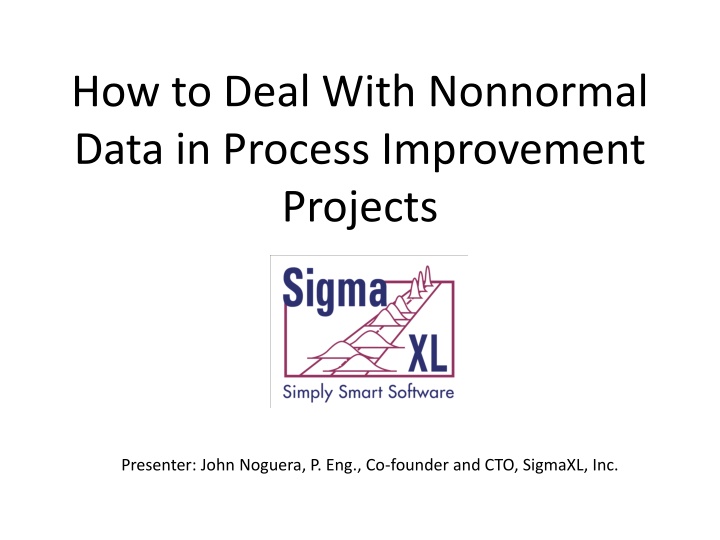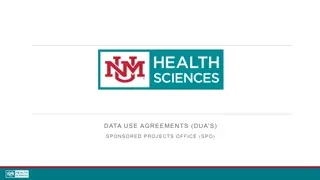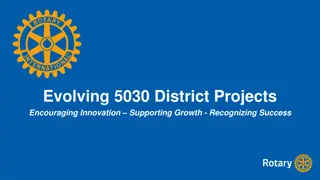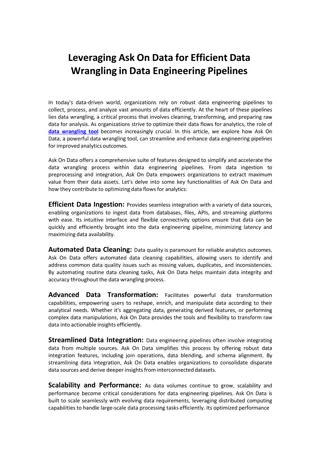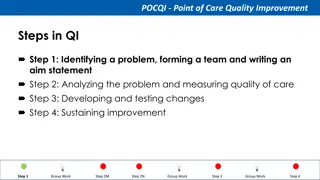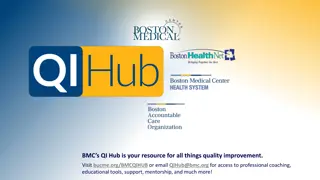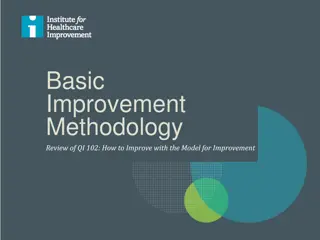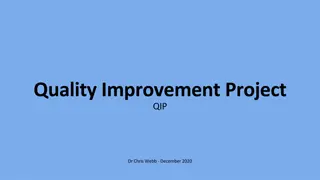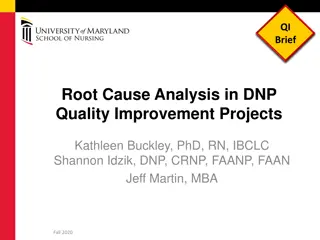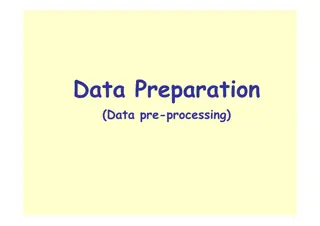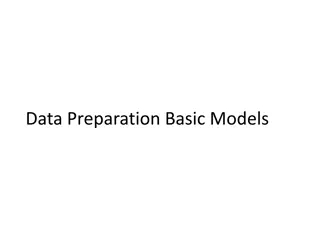Dealing With Nonnormal Data in Process Improvement Projects
Learn practical strategies for handling nonnormal data in process improvement projects, including detecting outliers, bimodal distributions, and measurement discrimination. Discover tools, tests, and considerations to effectively analyze and interpret nonnormal data.
Download Presentation

Please find below an Image/Link to download the presentation.
The content on the website is provided AS IS for your information and personal use only. It may not be sold, licensed, or shared on other websites without obtaining consent from the author.If you encounter any issues during the download, it is possible that the publisher has removed the file from their server.
You are allowed to download the files provided on this website for personal or commercial use, subject to the condition that they are used lawfully. All files are the property of their respective owners.
The content on the website is provided AS IS for your information and personal use only. It may not be sold, licensed, or shared on other websites without obtaining consent from the author.
E N D
Presentation Transcript
How to Deal With Nonnormal Data in Process Improvement Projects Presenter: John Noguera, P. Eng., Co-founder and CTO, SigmaXL, Inc.
AGENDA SigmaXL Tools to Detect Nonnormal Data Graphical Tools Normality Tests Things To Consider When Dealing With Nonnormal Data Do I have outliers or inherently nonnormal data? How do I deal with a bimodal distribution? How do I deal with nonnormality due to measurement discrimination ( chunky data) When do I need to worry about nonnormal data? Is the Central Limit Theorem working for me? Guidelines on sample size for Central Limit Theorem to work (for mild, moderate and severe skewness) SigmaXL Tools to Deal With Nonnormal Data Transformations and Distribution Fitting Nonparametric Tests Presentation: 50 Minutes; Q&A: 10 minutes
SigmaXL Tools to Detect Nonnormal Data Graphical Tools: Histogram (detect skewness, bimodal distribution, outliers, truncation) Boxplot (detect outliers) Control Chart/Run Chart (detect trends, outliers) Normal Probability Plot (separate outliers and inherently nonnormal data) Normality Tests: Anderson Darling (p < .05 indicates nonnormal data) Skewness & Kurtosis (p < .05 indicates skewness or kurtosis)
Things To Consider When Dealing With Nonnormal Data Do I have outliers or inherently nonnormal data? Use the graphical tools and process knowledge. Do not simply delete outliers! Deal with the special causes. Do test for normality with outlier removed. Correct known data entry errors (ok to delete). With Outlier: With Outlier Removed : Outlier
Things To Consider When Dealing With Nonnormal Data Do I have outliers or inherently nonnormal data? Normal Probability Plot for Inherently Nonnormal Data
Things To Consider When Dealing With Nonnormal Data How do I deal with a bimodal distribution? Identify with Histogram (bimodal distribution) Stratify for analysis (use group category variable). Confirm with 2 Sample t-test Control the X factor
Things To Consider When Dealing With Nonnormal Data How do I deal with nonnormality due to measurement discrimination ( chunky data) Identify with Normal Probability Plot Improve measurement system discrimination
When do I need to worry about Nonnormal data (i.e., is the Central Limit Theorem working for me)? Central Limit Theorem applies in hypothesis testing of averages (1 Sample t, 2 Sample t, ANOVA). If you have individual observations (rather than subgroups), n=1, then the central limit theorem does not apply. If you are performing a process capability study or creating an individuals control chart, normality is assumed. Nonnormal data will produce incorrect results (poor estimates of capability, false alarms). Apply transformations or distribution fitting.
Guidelines on sample size for central limit theorem to work (for mild, moderate and severe skewness) Rule of Thumb: Minimum Sample Size = 50* (Skewness)2 Mild Skewness = 0.5 (use n=30) Moderate Skewness = 1.0 (use n=50) Strong Skewness = 2.0 (use n=200) This is relevant for hypothesis testing on the mean or use of x- bar control charts If n is too small, and a larger sample size is not practical, use nonparametric tools
SigmaXL Tools to Deal With Nonnormal Data Transformations and Distribution Fitting Capability Combination Report (Individuals Nonnormal) Distribution Fitting Individuals Nonnormal Control Chart Box-Cox Transformation (includes an automatic threshold option so that data with negative values can be transformed) Johnson Transformation
SigmaXL Tools to Deal With Nonnormal Data Distributions supported: Half-Normal Lognormal (2 & 3 parameter) Exponential (1 & 2 parameter) Weibull (2 & 3 parameter) Beta (2 & 4 parameter) Gamma (2 & 3 parameter) Logistic Loglogistic (2 & 3 parameter) Largest Extreme Value Smallest Extreme Value Automatic Best Fit based on AD p-value
SigmaXL Tools to Deal With Nonnormal Data Nonparametric Tests: 1 Sample Sign and 1 Sample Wilcoxon (nonparametric equivalent to a 1 Sample t) 2 Sample Mann-Whitney (nonparametric equivalent to a 2 Sample t) Kruskal-Wallis and Mood s Median Test (nonparametric equivalent to ANOVA) Runs Test (used with Run Chart) Spearman Rank correlation (nonparametric equivalent to Pearson correlation)
SigmaXL Tools to Deal With Nonnormal Data Nonparametric tests make fewer assumptions about the distribution of the data compared to parametric tests like the t-Test. Nonparametric tests do not rely on the estimation of parameters such as the mean or the standard deviation, rather use median and ranks. They are sometimes called distribution-free tests. Note that nonparametric tests are less powerful than normal based tests to detect a real process change.
